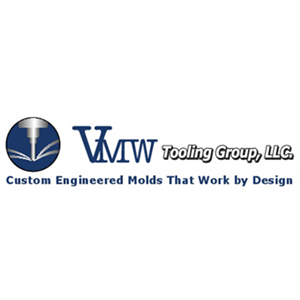Reinforced Reaction Injection Molding (RRIM) Tooling
Unlike RIM (Reaction Injection Molding) which uses unfilled resins, RRIM (Reinforced Reaction Injection Molding) uses filler materials to gain extra strength, tensile elongation and dimensional stability. Over half of all RIM materials use reinforcement fillers.
Reinforcement materials reduce the shrinkage of the material, reduce the thermal expansion of the material and reduce the droop and sag of the resin material at higher elevations.RRIM is an excellent choice when dimensional stability and mechanical properties are major engineering requirements. A plastic part can vary in size between winter and summer temperatures. This is because polymers have a coefficient of linear thermal expansion (CLTE) nearly tens times of steel. That means that mounting the part upon a steel frame could cause undesirable warpage as the plastic expands and contracts. This variation also can seriously affect component functionality when proper alignment is a key feature such as a door panel.
Using composite RRIM and SRIM materials is an affordable way to greatly reduce the overall weight of large components. Additionally, structural support can be integrated into the design for further dimensional stability of large flat panels.
Common RRIM Reinforcement Filler Materials
Numerous resins like epoxies, polyesters, nylons and polyurethanes have been developed for RRIM applications. The most common RRIM reinforcements are chopped or hammer milled glass fiber / glass flake, chopped roving, mica, quartz, calcium carbonate and aluminum oxide. Hammer milled fibers and flakes can be added directly to the resin before it reacts within the mixhead.
Reinforcement Filler Abrasive Nature
Some of the reinforcement resin fillers used in RRIM can be very harsh on a tool. We manufacture the molds to withstand the abrasive nature of these fillers for consistent product results. To alleviate excessive wear, we would use nickle, hardened aluminum or aluminum depending upon the part volume required. In this case softer manufacturing methods would only be suitable for very low volumes of part requirements.
RRIM Tooling
VMW manufacturers all RRIM Tooling in-house to exact specifications and tolerances. A correctly designed mold is the single most important factor in maximizing productivity with reduced scrap, reduced post-mold trimming for uniform part quality. Improvements in gating techniques, mixing head, and after-mixer designs are continuing to add to part quality and uniformity. We then mount your Reinforced Reaction Injection Mold on compatible post operative tooling fixtures for your RIM machines or suppliers machines.
Repairs and Modifications
VMW is also capable of providing any RRIM mold repairs, modifications or maintenance that you might need during the project lifespan of your RRIM Tools we have created.
Reinforced Reaction Injection Mold Tooling has advantages for many product designs that other manufacturing processes can not match. RRIM Tooling is extremely flexible and while it might not be the right choice for every project, there are many that can benefit from the low cost high strength prototype and production parts this manufacturing process can provide.
Please contact us to find out how VMW can make your RRIM Tooling project a success. Or fill out our quote request form to get a quote promptly. In many cases tool costing can be completed in 2 days or less. Once VMW receives the part data and understands the application, we can quickly assist with urethane selection, tool style (dependent on EAU) and get your project moving forward.


